
To the anniversary of the birth of Lev Krča
In 2012, 110 years have passed since the birth of the significant architect Lev Krča (May 25, 1902 – April 27, 1945). He was born in Velká Bíteš in the Czech-Moravian Highlands to Mořic Krča as the eighth and youngest child. He studied at the technical school in Brno and then from 1928 to 1931 at the Academy of Fine Arts in Prague in the architecture specialization under Josef Gočár.
After graduation, he worked from 1931 to 1938 in an office with Stanislav Tobek and Josef Kincel. They designed a wide range of buildings from family houses and villas to large sports facilities and complexes. The designs primarily derived from functionalist architecture and aimed to use the progressive construction methods of the time.
Already in 1933, the magazine Pestrý týden presented the construction of steel-structured cottages in Šárecké and Hostivařské valleys. For the summer house of Maxmilián Záveský (1933–34) in Dobřichovice, they also used this steel prefabricated skeleton. The daughter of the clients, Hana Kučerová-Záveská, a significant architect, participated in the interior design. The family house in Prague – Krč from 1934 on K Habrovce Street has a similar construction, and the same system was applied by the architectural office in building the functionalist villa of MUDr. Josef Železný in Jimramov from 1936-37. Here, in addition to the living part, the owner's office was added.
Another object built from a steel structure was a duplex in Prague's Košíře on Nepomucká Street (1937–38), with one part belonging directly to architect Tobek. All the mentioned houses and villas have flat roofs and other characteristics of functionalist architecture.
No less significant than the villas that emerged from their office can be considered sports buildings, which also aligned with the fact that Krča was a great sportsman, engaging in skiing and athletics. He also took many photographs, often focusing on sports themes.
In Nové Město na Moravě, according to their design, the Orlovna was built between 1936 and 1937, oriented perpendicular to the street line. Therefore, it presents only a relatively small façade with a large, currently luxfer window. The Orlovna currently serves as a cinema.
Among the works of this office is also “The Sports Stadium of the Vítkovice Ironworks in Silesian Ostrava” (1937 – 1939), which is set to be reconstructed in the near future. The capacity is described by the contemporary professional magazine as follows: “For the audience, 4,250 seats are reserved in the main grandstand, the covered area under the grandstand has 1,680 standing places, and the uncovered perimeter grandstand has 17,900 standing places, so the total number of spectators could be about 24,000.”
From the period after the independence of Lev Krča arises “The Summer House of Mr. A. P.” from 1938 in the significant summer resort of Senohraby. This “small villa” of relatively small dimensions had even three bedrooms, a maid's room, and a bathroom placed upstairs. Architecturally, the house with a flat roof still adheres to functionalist forms and overall concepts, but some details, such as the cyclopean masonry of the ground floor, already reveal a tilt towards vernacularism or rather exoticism.
In the villa of Věra and Bohuš Míček from 1939 – 40 in Nové Město na Moravě, the solution with a tent roof is more conservative than the previous houses, but for example, windows that extend over the corner or a strip window in the bay reveal Krča’s continuous modern architectural thinking.
During the period of independent creation, he also designed larger projects, such as a department store in Vacov with a very impressive rounded corner. In Náchod on Wolkerova Street, rows of houses and a villa for officials of the Mautner textile factories were built in 1941 according to his design.
In addition to the few mentioned buildings designed by the office and later by Krča himself, many other proposals and projects were created, mainly of SOKOL halls and other sports facilities, but also typologically diverse construction objects. Naturally, not all of them were realized, which generally applies to competition works.
During World War II, Krča became involved in resistance activities in the Council of Three. In April 1945, he moved with the headquarters of “R3” to Moravia, where they collaborated with partisan units. Krča, who had the cover name “Tiger”, died in combat near Velká Bíteš at the end of the war when he was hit by a mounted machine gun during an air raid. He was buried in the old cemetery, and his monument was created by Krča’s friend and collaborator, sculptor Jan Kavan.
After graduation, he worked from 1931 to 1938 in an office with Stanislav Tobek and Josef Kincel. They designed a wide range of buildings from family houses and villas to large sports facilities and complexes. The designs primarily derived from functionalist architecture and aimed to use the progressive construction methods of the time.
Already in 1933, the magazine Pestrý týden presented the construction of steel-structured cottages in Šárecké and Hostivařské valleys. For the summer house of Maxmilián Záveský (1933–34) in Dobřichovice, they also used this steel prefabricated skeleton. The daughter of the clients, Hana Kučerová-Záveská, a significant architect, participated in the interior design. The family house in Prague – Krč from 1934 on K Habrovce Street has a similar construction, and the same system was applied by the architectural office in building the functionalist villa of MUDr. Josef Železný in Jimramov from 1936-37. Here, in addition to the living part, the owner's office was added.
Another object built from a steel structure was a duplex in Prague's Košíře on Nepomucká Street (1937–38), with one part belonging directly to architect Tobek. All the mentioned houses and villas have flat roofs and other characteristics of functionalist architecture.
No less significant than the villas that emerged from their office can be considered sports buildings, which also aligned with the fact that Krča was a great sportsman, engaging in skiing and athletics. He also took many photographs, often focusing on sports themes.
In Nové Město na Moravě, according to their design, the Orlovna was built between 1936 and 1937, oriented perpendicular to the street line. Therefore, it presents only a relatively small façade with a large, currently luxfer window. The Orlovna currently serves as a cinema.
Among the works of this office is also “The Sports Stadium of the Vítkovice Ironworks in Silesian Ostrava” (1937 – 1939), which is set to be reconstructed in the near future. The capacity is described by the contemporary professional magazine as follows: “For the audience, 4,250 seats are reserved in the main grandstand, the covered area under the grandstand has 1,680 standing places, and the uncovered perimeter grandstand has 17,900 standing places, so the total number of spectators could be about 24,000.”
From the period after the independence of Lev Krča arises “The Summer House of Mr. A. P.” from 1938 in the significant summer resort of Senohraby. This “small villa” of relatively small dimensions had even three bedrooms, a maid's room, and a bathroom placed upstairs. Architecturally, the house with a flat roof still adheres to functionalist forms and overall concepts, but some details, such as the cyclopean masonry of the ground floor, already reveal a tilt towards vernacularism or rather exoticism.
In the villa of Věra and Bohuš Míček from 1939 – 40 in Nové Město na Moravě, the solution with a tent roof is more conservative than the previous houses, but for example, windows that extend over the corner or a strip window in the bay reveal Krča’s continuous modern architectural thinking.
During the period of independent creation, he also designed larger projects, such as a department store in Vacov with a very impressive rounded corner. In Náchod on Wolkerova Street, rows of houses and a villa for officials of the Mautner textile factories were built in 1941 according to his design.
In addition to the few mentioned buildings designed by the office and later by Krča himself, many other proposals and projects were created, mainly of SOKOL halls and other sports facilities, but also typologically diverse construction objects. Naturally, not all of them were realized, which generally applies to competition works.
During World War II, Krča became involved in resistance activities in the Council of Three. In April 1945, he moved with the headquarters of “R3” to Moravia, where they collaborated with partisan units. Krča, who had the cover name “Tiger”, died in combat near Velká Bíteš at the end of the war when he was hit by a mounted machine gun during an air raid. He was buried in the old cemetery, and his monument was created by Krča’s friend and collaborator, sculptor Jan Kavan.
The English translation is powered by AI tool. Switch to Czech to view the original text source.
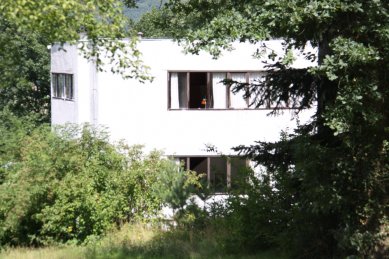
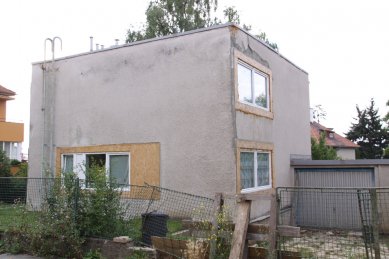
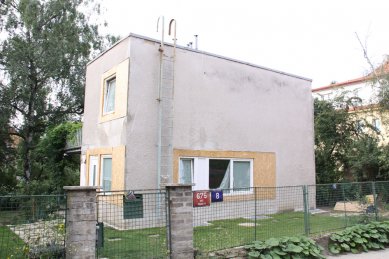
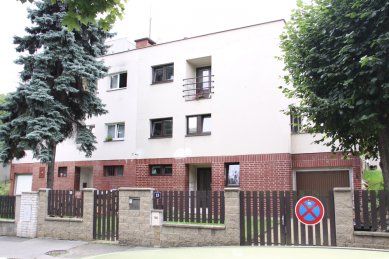
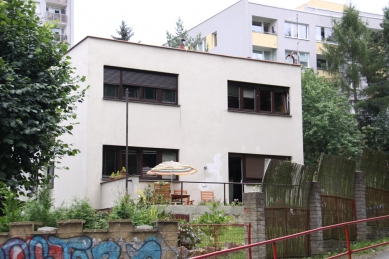
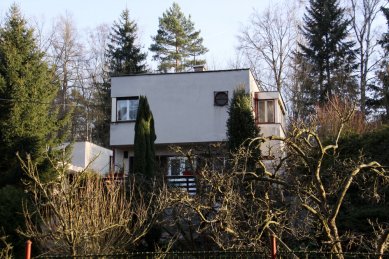
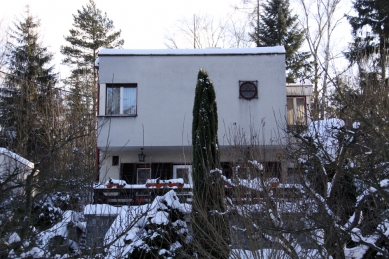
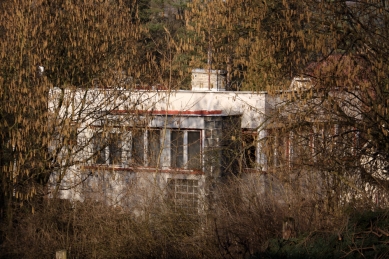
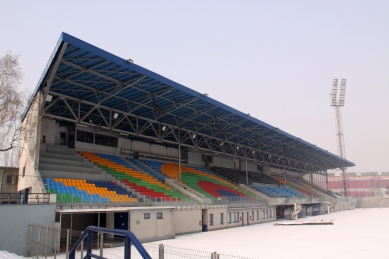
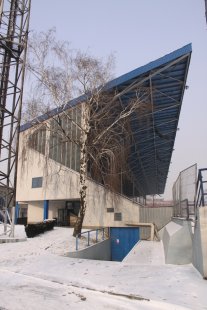
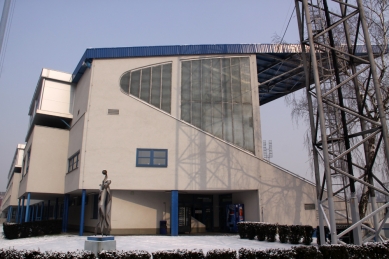
0 comments
add comment






